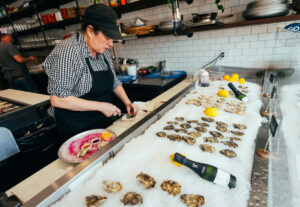In 2013, when Paul Hawley transplanted a few wild hop plants he found growing along a fence in a vineyard near the Russian River, he had no idea it would spark the revival of a crop that once made Sonoma County famous with brewers around the world. “In the beginning, I just wanted to see what would grow,” says the co-owner of Fogbelt Brewing Company, who grew up the son of a winemaker, farming grapes outside Healdsburg.
Hawley had already planted a few rows of the industry-standard hop varieties Cascade, Chinook, and Centennial. But the row of wild California Cluster hops he discovered along the river outproduced them all, he says. “They just blew away everything else.” At the time, Hawley’s quarter-acre was the largest hopyard he knew of in Sonoma County, while in Santa Rosa, Moonlight Brewing Co. also had a quarter-acre hopyard that had been rescued from Korbel.
A beer-drinking buddy of Hawley’s who shares his love of hops, Mike Stevenson planted his half-acre Warm Spring Wind Hop Farm in Sebastopol a year later. When Stevenson joined with Hawley to form the NorCal Hop Growers Alliance in 2016, they were hoping to dig up anything they could find out about the heyday of hops in Sonoma County. They knew hops had first been planted near the Laguna de Santa Rosa in 1858, and the county’s hopyards reached more than 2,000 planted acres by 1899. By the 1930s, around 3 million pounds were harvested annually. But for a number of reasons, the crop had largely faded away by the 1960s.
“I kept thinking if only I could find an old-timer who used to grow hops, they could answer all my questions,” Hawley remembers. “But I couldn’t find anyone.”
Click play to watch”The Dance of the Bines” by John Beck
As more farmers joined the hop collective, they shared hard-won tips learned from trial and error along with information gleaned from research. The group saved on bulk orders and pooled money together to buy new equipment. Guest speakers from UC Davis and the hop mecca of Yakima, Washington, dropped by to share the latest in industry news.
Now, about a month into this year’s abundant hop harvest, as fresh wet-hopped brews are getting chalked up on local beer boards, a half-dozen tight- knit commercial growers are mounting a hop revival, marking a tradition that dates back 160 years.
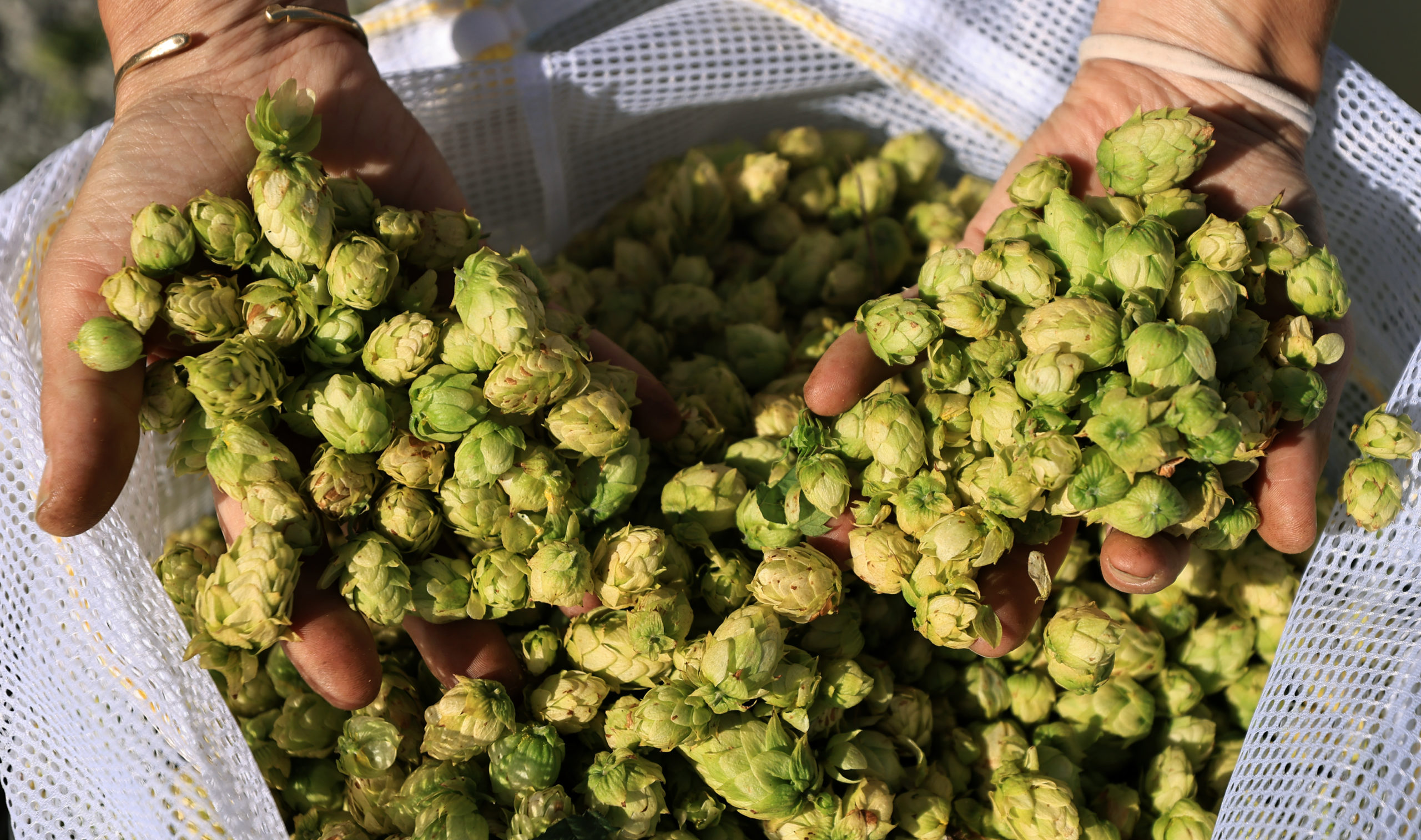
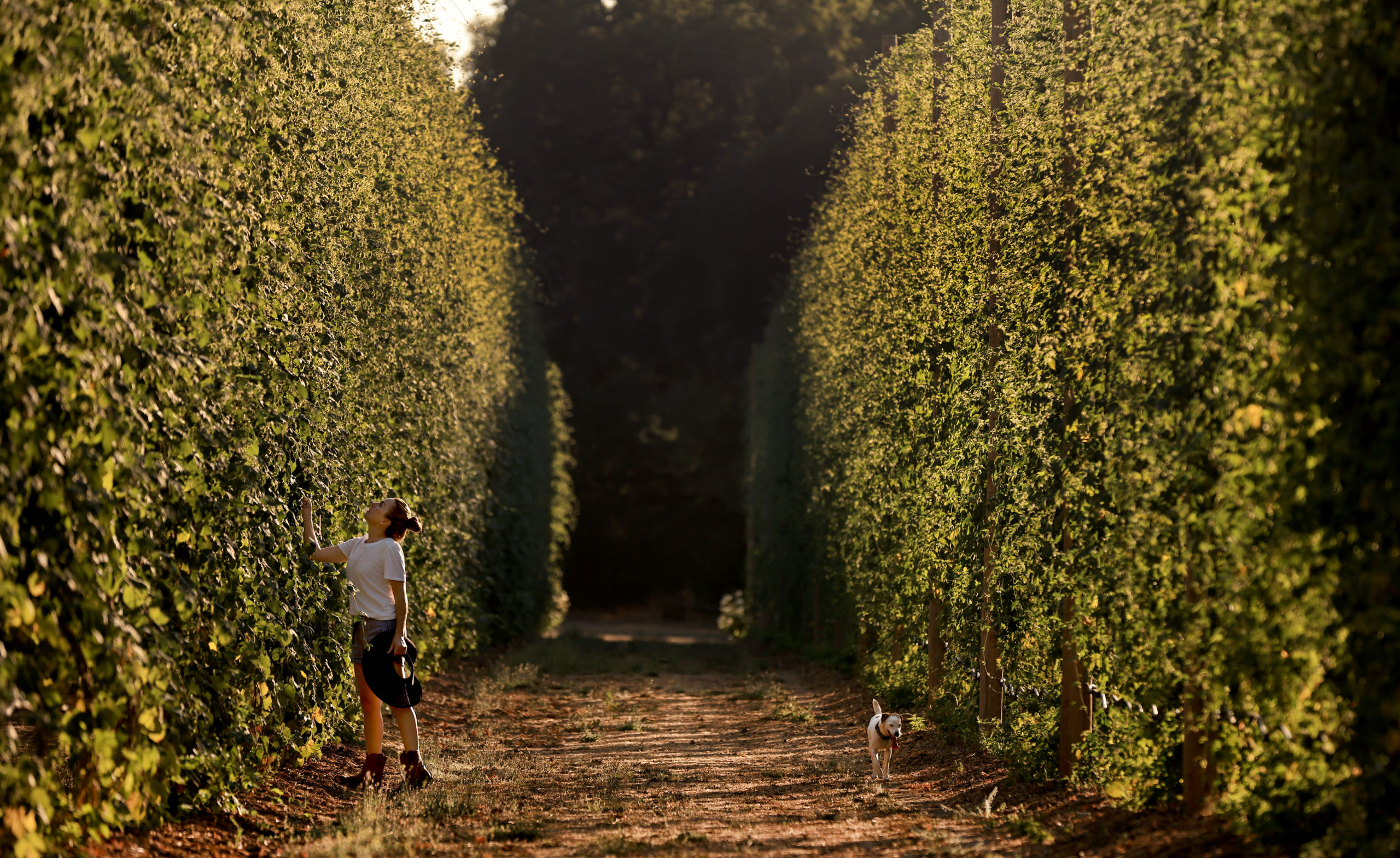
In Rohnert Park, Ron and Erica Crane are embarking on their second harvest at Crane Ranch Hops, where sheep help with pruning and fertilizing on a family farm first settled in 1852. The couple is building a kiln to dry some of their hops this year.
In west Santa Rosa, Erin Shea and Mike Sullivan at Blossom & Bine are growing a little-known variety with hardly any bitterness called Teamaker, along with the usual suspects like Cascade, Chinook, and Cashmere. Last year, the couple picked their first crop entirely by hand — something they’ll never do again.
North of Healdsburg, in Alexander Valley, Melissa Luci feeds her Alexander Valley Hops a healthy mushroom compost, so tasty it attracts raccoons. To keep critters out of her 1.5-acre hopyard, which is surrounded by a sea of Cabernet vines, she often blasts live Giants baseball radio broadcasts into the night.
In Sebastopol, at Capracopia and Redwood Hill Farm, Scott Bice fertilizes his hops with goat manure from his dairy. Every hop grower in the area will drop by his farm at some point during harvest to feed their bines through “The Wolf,” a reconstituted 1973 German hop harvester that Bice and the Cranes imported for $50,000 for the hop growers collective.
Keeping it local this fall, these growers’ hops will flavor beers at Russian River, Fogbelt, Crooked Goat, Barrel Brothers, Steele and Hops, Old Possum, Pond Farm, and Mad Fritz breweries, among others.
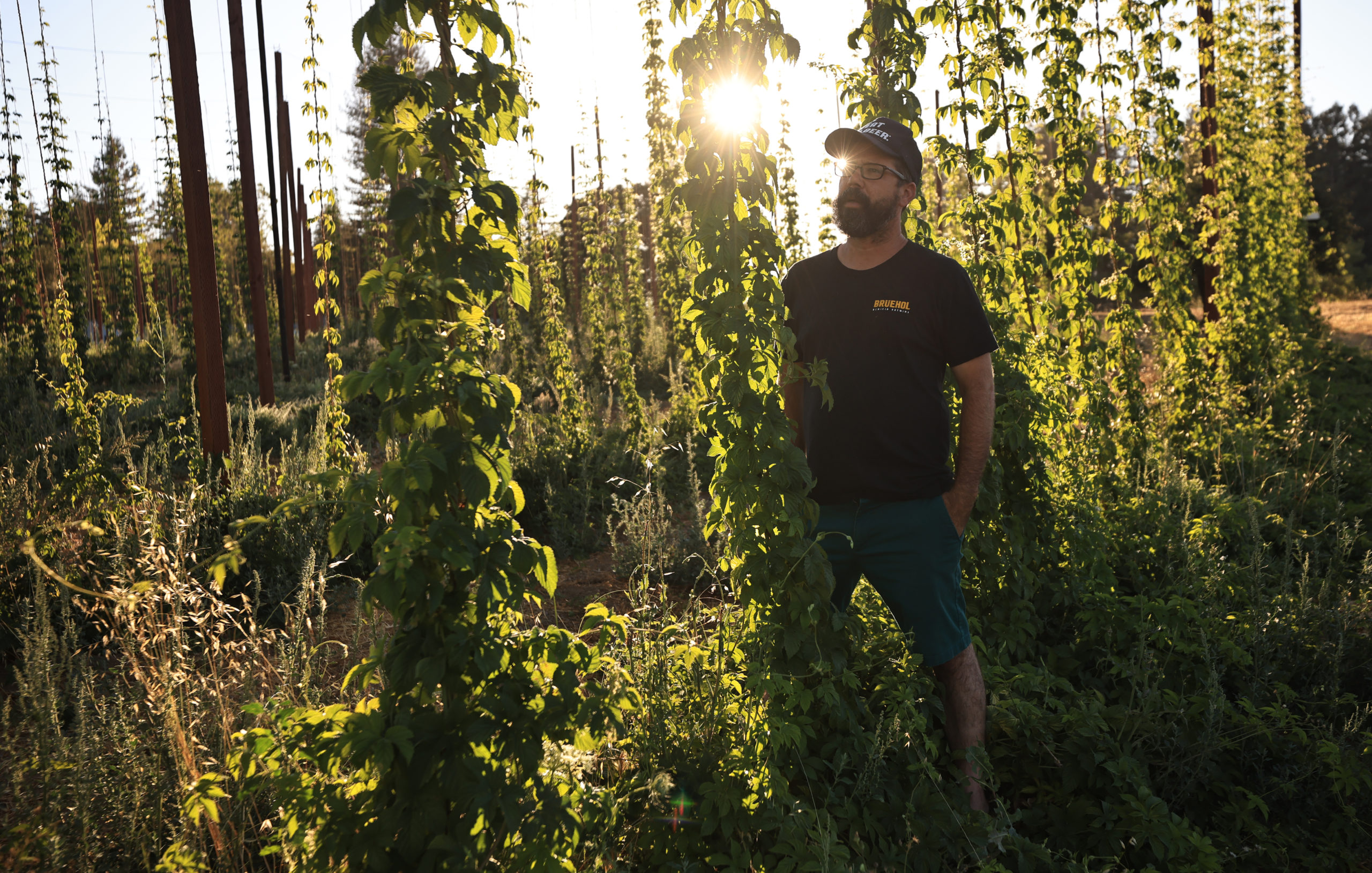
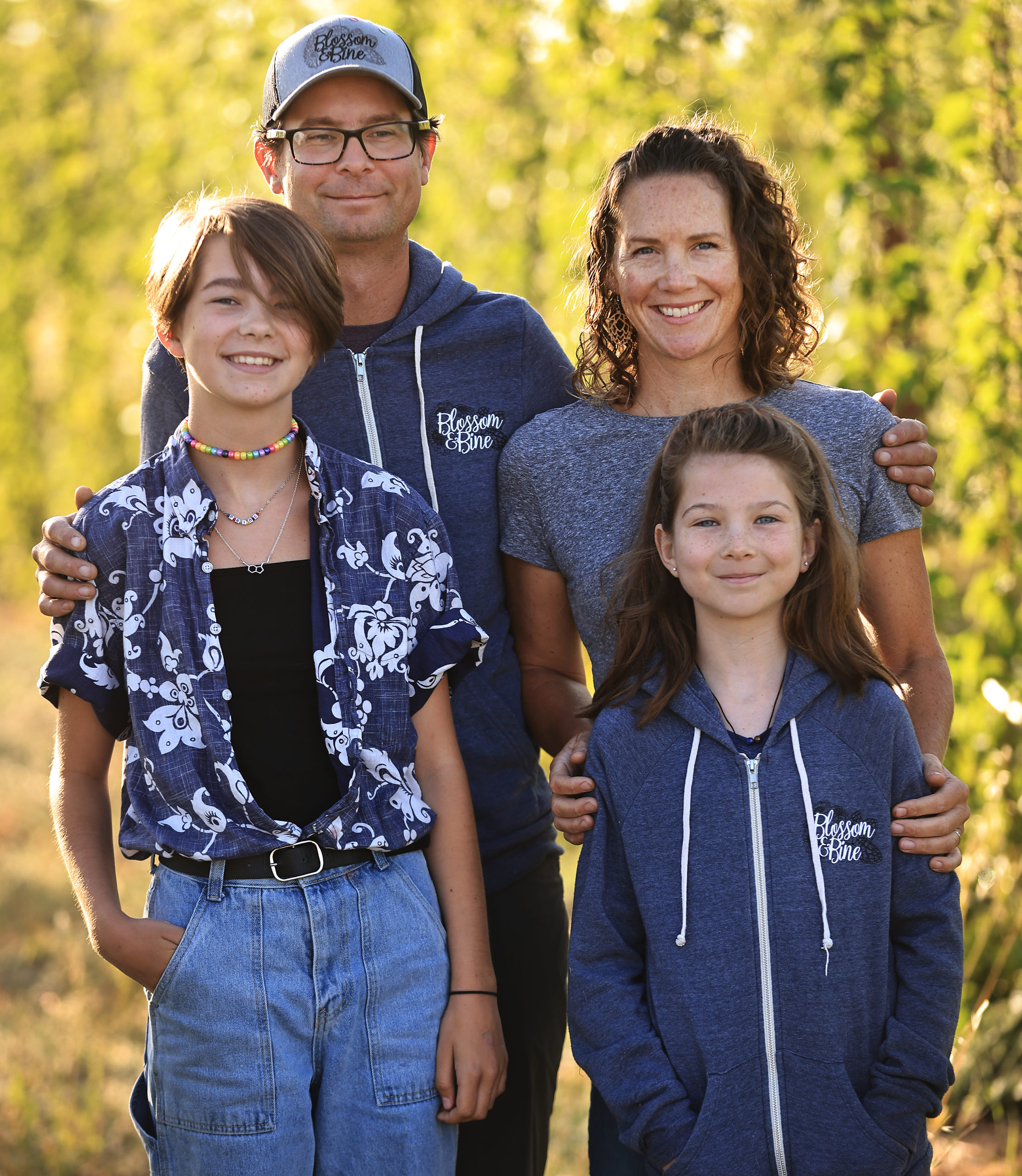
If you’ve never seen a hop harvest, the first thing to know is a hop vine is called a “bine.” A close cousin of cannabis, the hop flower, or “cone,” is what gives beers like IPAs and pale ales their beautifully bitter aromas and delicate floral notes. More jargon: A beer’s bitterness is measured in IBUs or International Bitterness Units. And when hops have gone “O.G.” they have not turned “Original Gangster” but “Onion-Garlic” — a dreaded off-flavor that can plague certain varieties.
Fresh, wet-hopped beers are what get many beer lovers going this time of year. A wet-hopped beer is one made with fresh whole cones harvested only hours before they’re dropped into the brew kettle. It’s a seasonal tradition, available only in August, September, and October, making it the Beaujolais Nouveau of beers. Most beers are dry-hopped, with cones that are heated and dried in a hop kiln and often pelletized and refrigerated before being added to the beer. The difference between a fresh, wet-hopped beer and a dry-hopped one, people like to say, is the difference between cooking with fresh basil from the garden and dried basil from the spice rack.
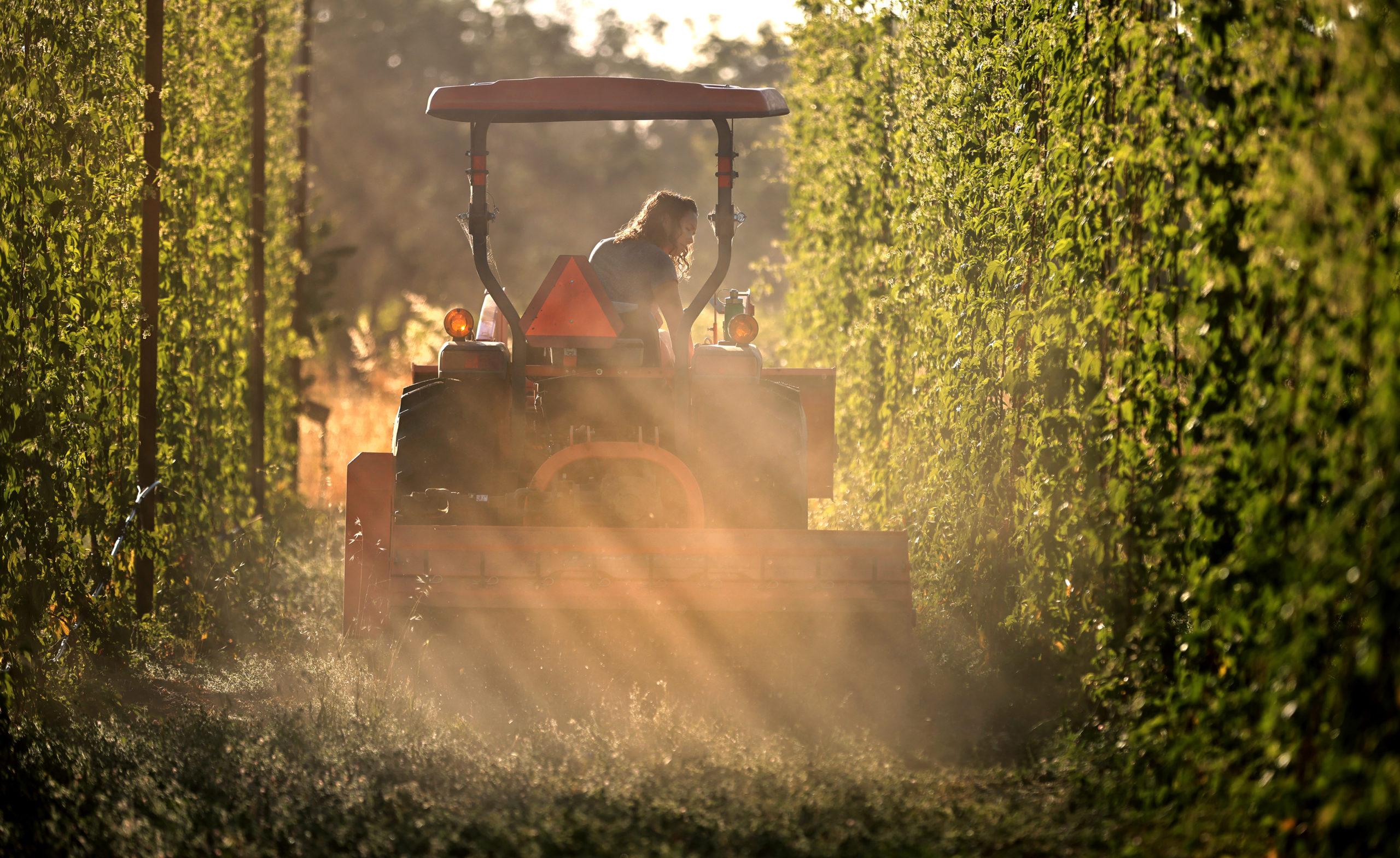
To see and smell a young hop flower coming to maturity on the bine, you begin to understand the allure for any brewer looking to make the freshest, locally sourced beer available. Standing in the middle of her hopyard on a baking-hot afternoon, Melissa Luci of Alexander Valley Hops plucks a flower and pulls it apart to expose tiny, yellow lupulin glands inside. “That’s what flavors the beer,” she says, pointing to the bright resinous beads before letting the flower fall to the ground, which is composted with bark from trees burned by the 2019 Kincade fire.
Luci, who has a degree in art history, came to hop- growing on a whim. One day, as she was looking at the long, narrow fairway where her father would drive golf balls every evening before dinner, “it occurred to me to go up,” she says — literally 18 feet in the air. She began researching and poring over archival photos and erected a hopyard on wooden poles she sourced from Washington. “You want them to reach the top by the summer solstice,” she explains, looking up at the climbing tendrils, which always wrap clockwise around the coconut-husk twines. On this day, most of her 1,500 bines of Cascade, Triumph, Chinook, and Cashmere have met the challenge and are touching the top wire as they dance in the breeze, undulating in waves down each row.
Luci’s family has grown Cabernet grapes since the ’70s in the surrounding Peline Vineyards. She’s a farmer, but very much a Cali farmer. When you ask what it was like to taste the first beer flavored with her own hops, she says, “It was bitchin.’” One of the most memorable was a Barrel Brothers concoction called “Hop Cones of Dunshire,” inspired by the TV show “Parks and Rec.”
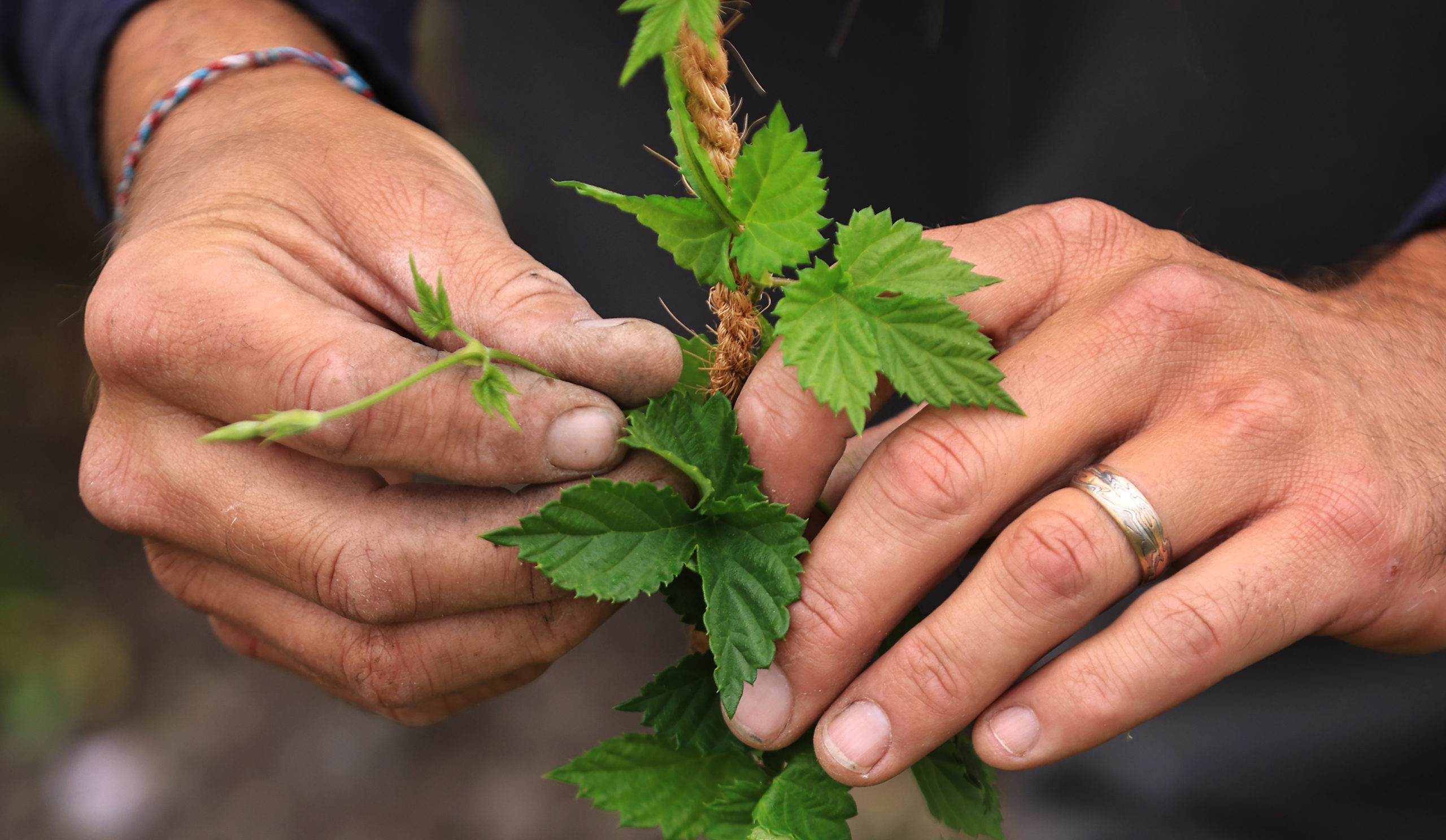
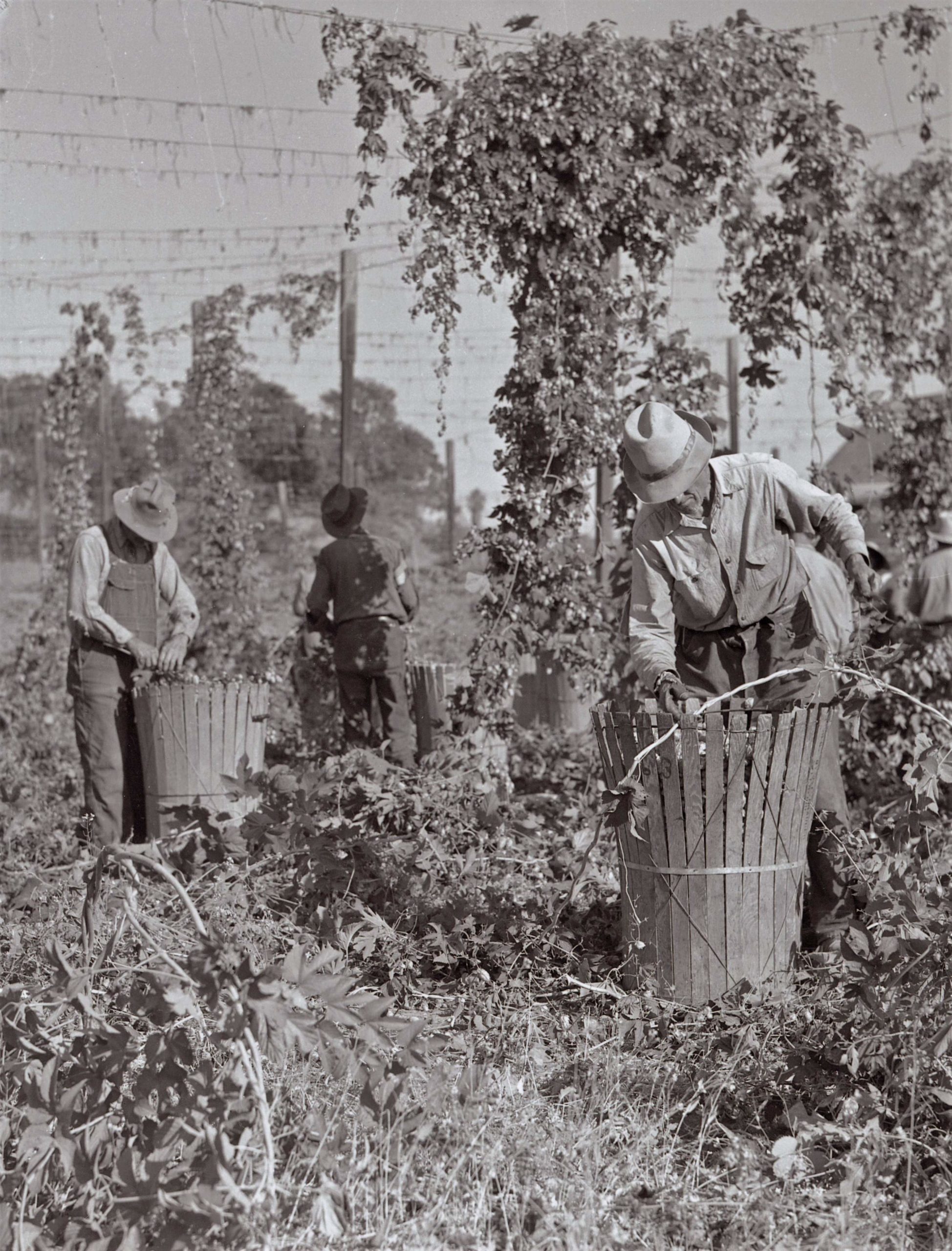
Luci had an early harvest this year. Early or late, the annual hop harvest was always big news around the turn of the 20th century. “During the period of about four weeks from September to the early part of October all the way from 15,000 to 30,000 men, women, and children were busily engaged from sunrise till sunset picking the blossoms from the great hop fields of California,” reads a 1900 story from the San Francisco Chronicle. It estimated at least 7,500 acres of hops were planted in Sonoma, and neighboring counties, totaling 9 million bines.
Every fall, migrant workers would camp along the banks of the Russian River, as entire families pitched in for the harvest. Paul Hawley’s 97-year-old grandmother tells stories of picking hops as a little girl for a few seasons, always adding how “it wasn’t much fun at all.” Back then, hop harvesters walked on stilts to pick the upper reaches of towering bines. They wore thick wool suits to protect themselves from scratchy bines and what newspaper stories called “hop poisoning” — a severe rash on the face and arms from the “nettle-like fuzz on the stalks of the hop vine.” And their hands would end up stained dark from hop resin — something that could be “removed by rubbing with the crushed green leaves of the hop.”
By the early 1900s, when Grace Brothers Brewery in Santa Rosa was selling its “Special Brew” (and later “Happy Hops” lager), the local crop flavored much lighter, less hoppy beers than the double and triple IPAs that score raves on Beer Advocate today. Back then, a variety called California Cluster was king — the same one Paul Hawley later found growing wild in a vineyard off Eastside Road. A London hops broker who visited both Yakima and Sonoma County hopyards in 1892 told the Sonoma Democrat that Yakima hops were very rich in lupulin and “altogether of the finest quality for the European market.” But “they are excelled by the Sonoma hops in only one essential. The Yakima hops lack softness to the touch, silkiness, which the Sonoma product possesses in a high degree.”
By the ‘60s, the crop had all but died out when one of the last big harvests took place at Bussman Ranch near Windsor. Post-World War II fertilizers had introduced “downy mildew” into the soil, decimating hopyards, which were then replanted with prunes and grapes. New trends and drinking preferences favored lighter, less hoppy beers. With more daylight hours (hops need 16 hours a day) and soil conditions more resistant to mildew, Yakima, Washington offered better growing conditions for hops. The area now grows around 75% of the hops in the U.S., which produces nearly half of the hops in the world, about the same amount as Germany.
But local hops have a huge advantage when it comes to seasonal wet-hopped beers: They can be picked in a hopyard a few miles from the brewery and dropped in the kettle within hours. Wet-hopped brews also require about five times the amount of hops when wet, which at $8 to $9 a pound (compared to the 81 cents per pound that pioneer farmers Otis Allen and Amasa Bushnell got for their 1,100 pounds of inaugural Sonoma County hops in 1858) makes for a decent payday for local growers. To make a wet-hopped beer with Northwest hops — and some Bay Area brewers actually do it—you need to overnight the hops by mail, paying a premium for what is mostly water weight.
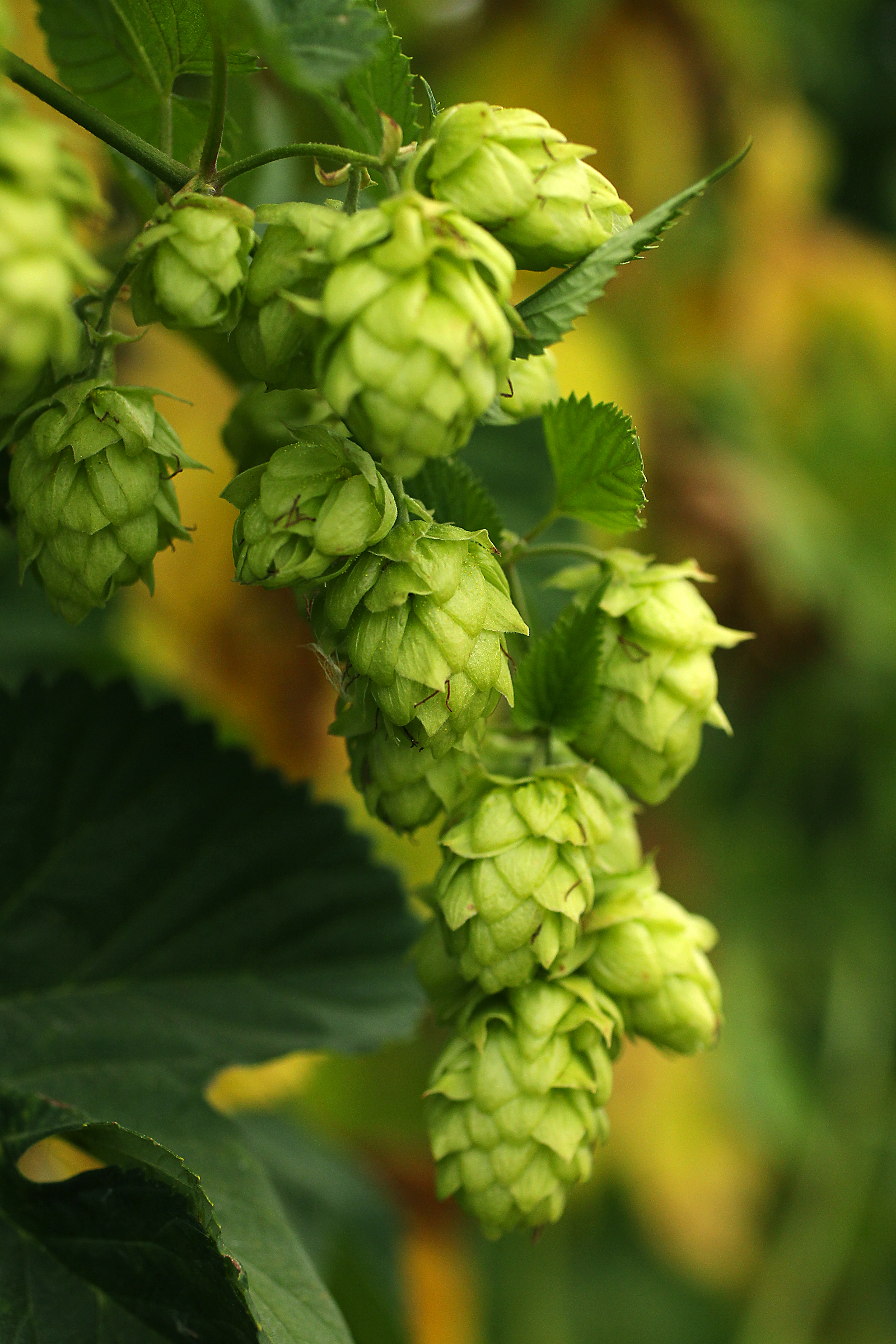
For now, the next step in the rebirth of Sonoma County hops will be reaching and maintaining a consistent level of quality that brewers can count on every harvest, says Vinnie Cilurzo, owner-brewer at Russian River Brewing Company. Cilurzo grew hops at Korbel in 1997, where his brewery was first started, and now buys 50,000-60,000 pounds of whole cone hops a year from growers in the Northwest.
“Just because it’s local doesn’t mean that the quality is there,” says Cilurzo, who pitched in $5,000 so the NorCal Hop Growers Alliance could purchase its first harvester — a modern update of the first hop- picking machine invented in 1940 by Santa Rosa farmer Florian Dauenhauer. “So we need to make sure these growers are doing the best they can and have the best practices they can to have the highest quality hops that are at least coming close to what we can get up in the Northwest.”
A lot of it comes down to timing, Cilurzo says — knowing when to prune, when to add nutrients, when to train the bines up the line, how much to water, and ultimately, when to pick so the hops don’t come in underripe or overripe.
“If people aren’t harvesting at the right time and they’re just doing it for convenience — like, say the brewer says, ‘We have to do this the second week of August or we can’t do it.’ And the grower needs the money — then the hops aren’t going to be as good and then the beer won’t be as good,” says Scott Bice, who started farming a quarter-acre in 2015 on a neglected apple orchard at his Redwood Hill goat dairy and now grows about 1.5 acres.
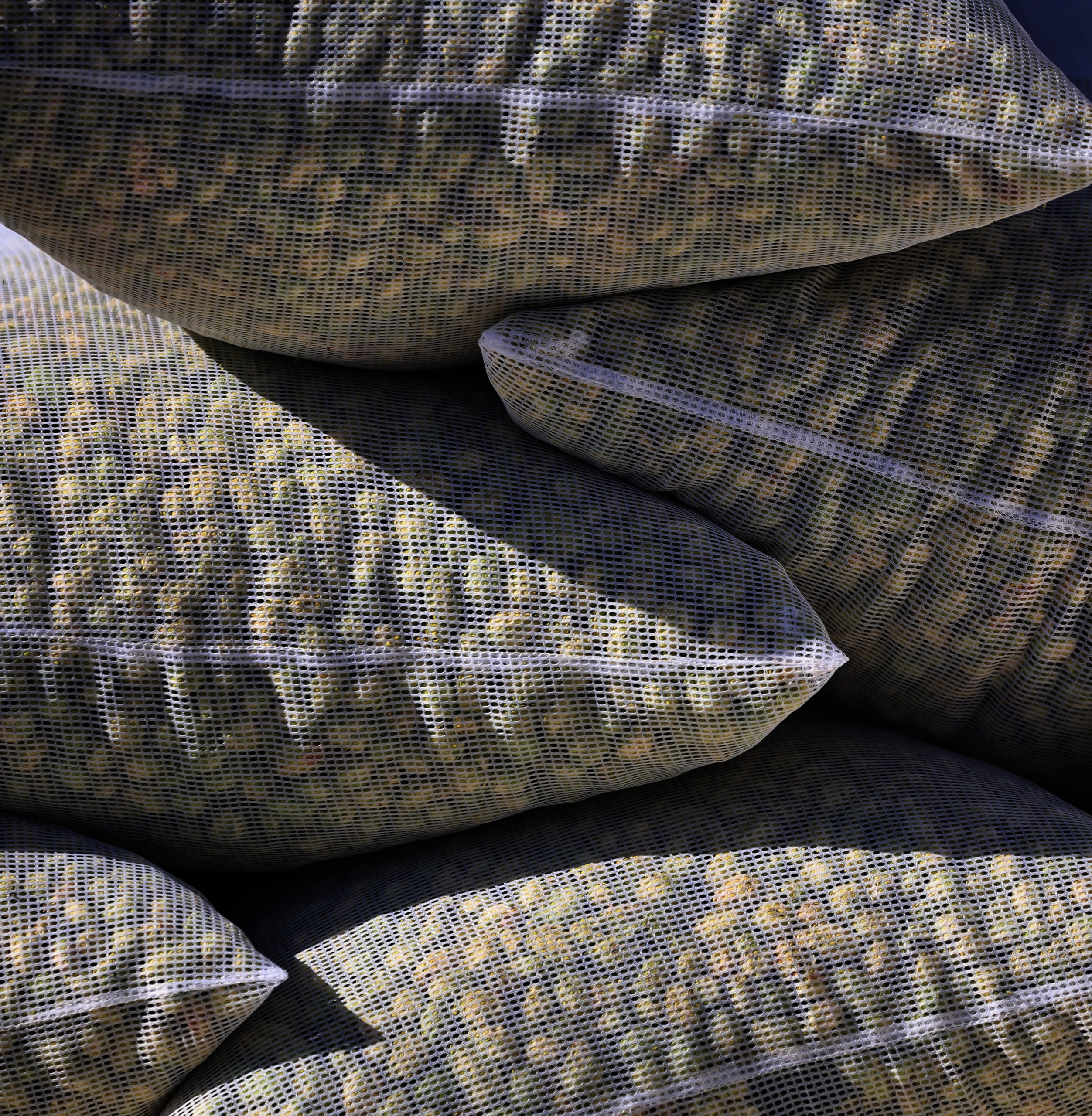
When it comes to locally sourced beer, there’s one final ingredient that’s been missing all these years: Barley. On a hot, dusty June afternoon, Ron Crane of Crane Ranch Hops, who comes from a longtime local farming and ranching family, pulls up to a farm on Lakeville Highway, southeast of Petaluma, where he grows hay and runs sheep on 1,000 acres along the Petaluma River. His pickup truck is loaded down with spent grain from Russian River Brewing Company, a trail of juice dripping out the back of his tailgate onto the dirt road. While some ranchers are spending a fortune on feed during the drought, Crane keeps his sheep alive on the mealy brewing byproduct that he gets for free.
It was his wife Erica’s idea to plant hops. “I wanted to find something that could be our legacy,” she explained a few days before, wearing a “Don’t Worry Be Hoppy” T-shirt while touring their 2.5-acre hopyard. Last year, the couple got to belly up to the bar at the Russian River outpost in Windsor to toast their very own R&D Crane Ranch Pale Ale. For Ron, who flew Apache helicopters in the second Iraq War and CALSTAR rescue helicopters, it marks a new adventure, inspiring him to build a hop kiln this year to extend the life of his hops.
But today, he’s eager to check on his barley crop. If a lab test confirms the protein levels are suitable for malting, it will be one more step toward his dream of making a beer from entirely local ingredients — the holy grail for farm-to-bottle afficionados — all sourced and made within a 30-mile radius.
Back in 2017, Nile Zacherle at Mad Fritz in St. Helena, who specializes in origin beers, made an all-Sonoma County beer with hops from Bice’s Capracopia hopyard and barley from Front Porch Farm in Healdsburg.
But in a county that prides itself on homegrown ingredients, this new all-local brew will be special, with barley grown by the same farmer who grew the hops. Crane’s plan is to malt the barley at Grizzly Malt in Rohnert Park, and brew the beer in batches at Russian River Brewing Company and Old Caz Beer.
Taking a four-wheeler out to his field of Genie barley, Crane picks a few spikes and pulls off the golden barley berries, turning them over in his hand. They’re still at least a few days away from harvesting. “I’m hoping in a few months, this will go into a fresh- hopped batch of beer,” he says, smiling. “How cool would that be?”
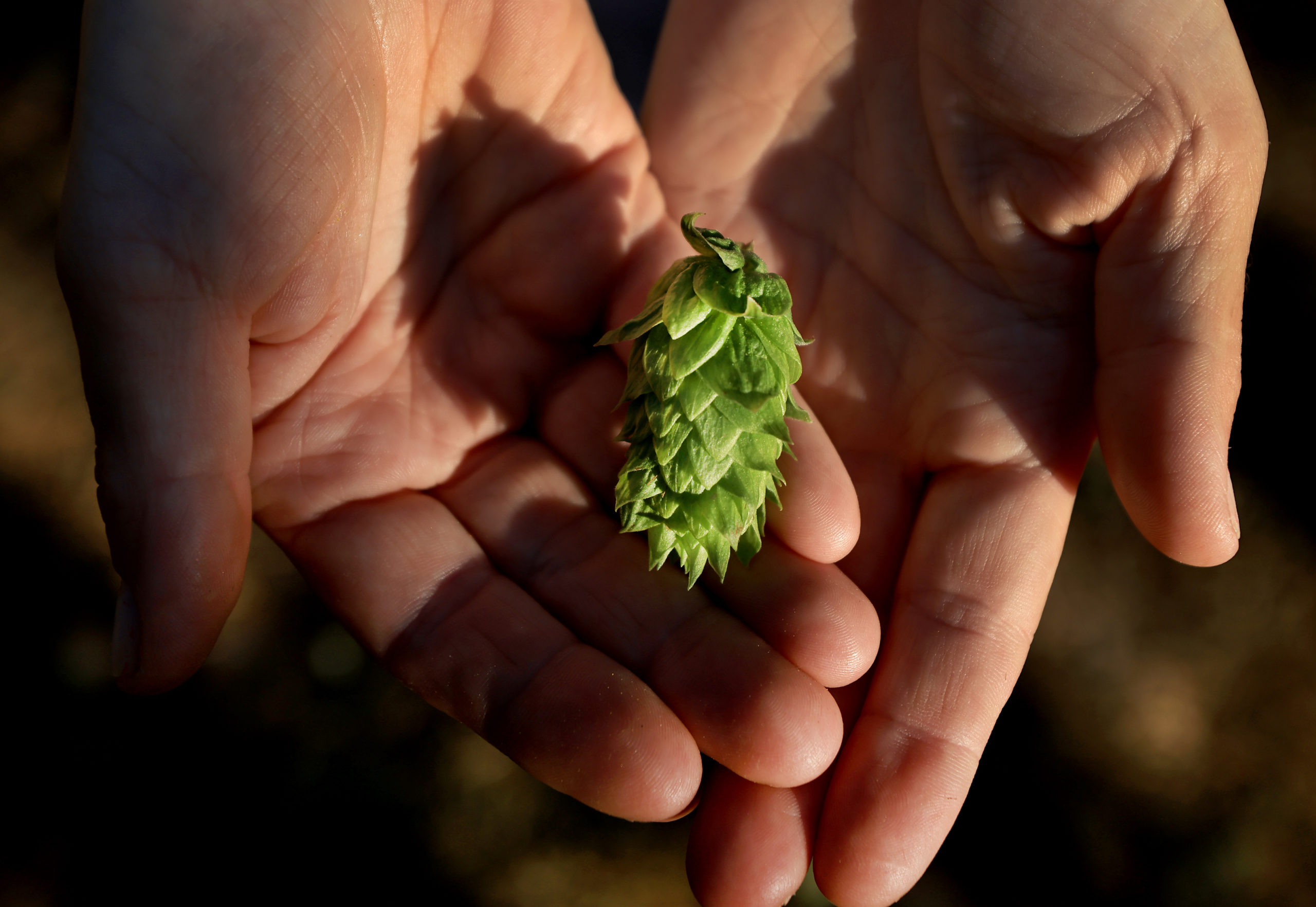
Where to Drink Wet-Hopped Beers
Sonoma’s version of Oktoberfest arrives in September, as local farmers wake before dawn to harvest ripe hops, delivering them to breweries hours after they’re picked. “You really get the essence in the beer of what the hops smell and taste like hanging on the bine,” says Russian River Brewing Company owner-brewer Vinnie Cilurzo. “Our goal is to have the hops picked from the bine and into the kettle in 5 to 6 hours.”
Drinking a wet-hopped beer is the best way to sample Sonoma’s terroir. Instead of being dried in a kiln and pelletized, home-grown hops are dumped whole-cone into wet-hopped beers. This month, wet-hopped IPAs, pale ales, and pilsners start showing up in pastel chalk on beer boards all over the Bay Area. It’s a wild time of year for beer lovers: The seasonal brews are often available for just a day or two, or a week at most.
Fogbelt Brewing Company
Owners Paul Hawley and Remy Martin plan to brew four to five wet-hopped beers this harvest, releasing them in a Wet Hop Week celebration, with hopped-up food pairings, most likely in the first or second week of September. “These are the most exciting beers for us to brew, because you only brew them once a season,” says Hawley, who is also petitioning the county to create a new “farm brewery” designation that would give breweries similar tax and ag benefits as wineries, a model that’s already been adopted in New York, Oregon, and Placer County.
Fogbelt will once again make an Alliance IPA using hops from any NorCal Hop Growers Alliance members (commercial and non- commercial growers) who want to add their cones to the mix.
This past spring, Hawley helped prune the bines at Scott Bice’s Capracopia hopyard and used all the cuttings to make pickled hop shoots, which will be served during Wet Hop Week. In the past, they’ve also served salad with hop-oil dressing, hops chimichurri on lamb, and sausage made with hops alongside their wet- hopped beers.
1305 Cleveland Ave., Santa Rosa, fogbeltbrewing.com
Russian River Brewing Company
Even Pliny can’t compete with the freshness of a wet-hopped beer. “It’s one of my favorite beer styles,” says Vinnie Cilurzo. In 1998, Russian River Brewing became only the second brewery in America (in modern times) to make a wet- hopped beer — with Cascade and Chinook hops Cilurzo grew at Korbel Winery.
Last year, Cilurzo and his wife, Natalie, helped bring in the harvest at Crane Ranch Hops, buying a few hundred pounds of Cascade, Chinook, Triumph, and California Cluster to make HopTime Harvest Ale and R&D Crane Ranch Pale Ale. Look for more Crane Ranch hops, and possibly other locally farmed hops, in RRBC wet-hopped beers in early to mid-September.
700 Mitchell Lane, Windsor, and 725 Fourth St., Santa Rosa, russianriverbrewing.com
Pond Farm Brewing Company
The San Rafael brewery, which takes its name from the west county artist colony located near where owner-brewer Trevor Martens grew up, is planning on brewing two wet-hopped beers in mid-September: a Pils and an IPA. Last year, they made a pilsner from Blossom & Bine’s barely bitter Teamaker hops. “While it leaves some things up in the air regarding the brew schedule,” says Martens, “it’s really exciting for us to work with a local hop farmer and be waiting for this natural product to hit its peak.”
1848 Fourth St., San Rafael, pondfarmbrewing.com
Other local breweries that love to make wet-hopped beers are Crooked Goat, Barrel Brothers, Steele and Hops, and Old Possum. Check their beer boards and social media for the latest, and hurry — these special brews don’t last long.





